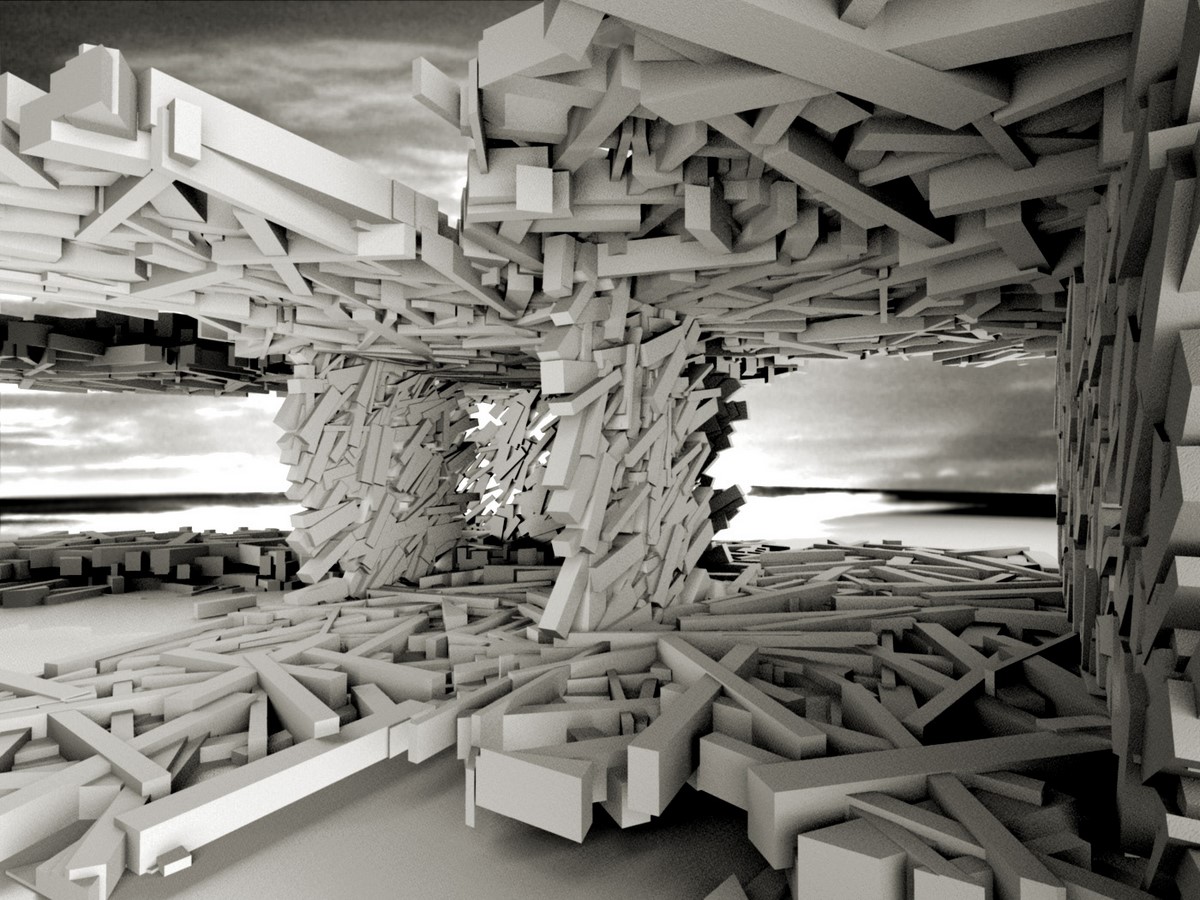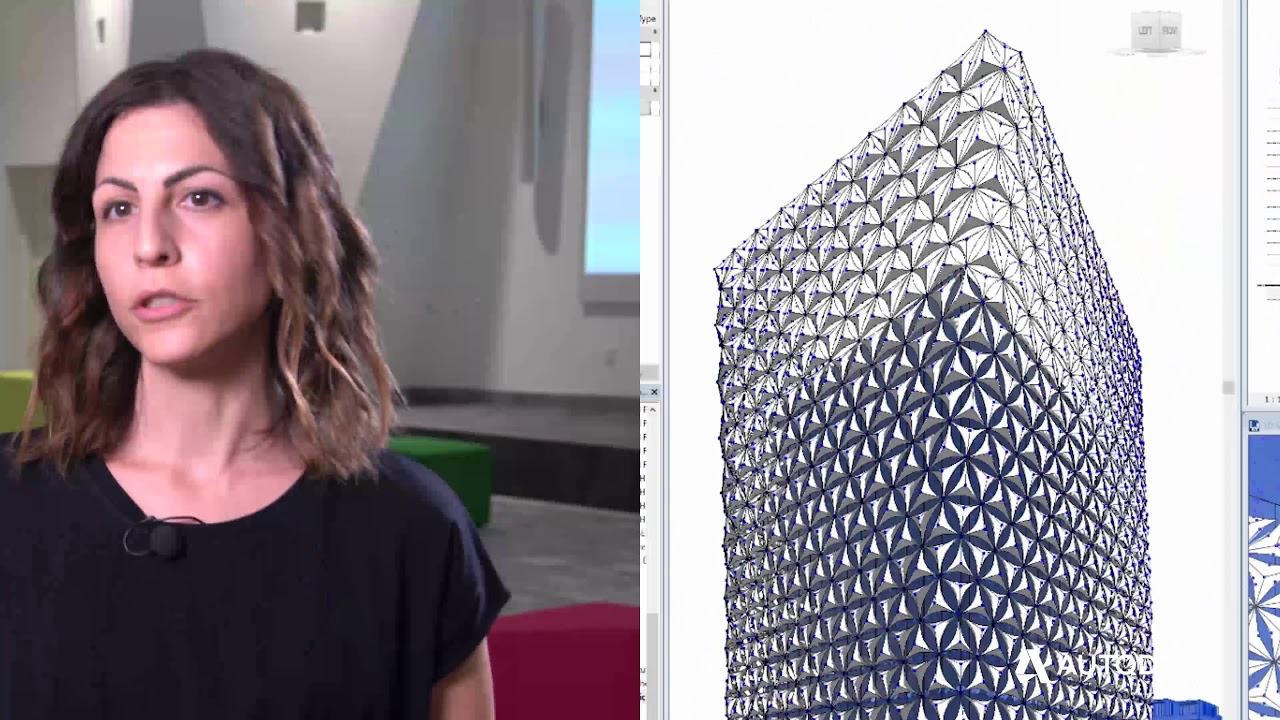Generative Design - Revolutionizing The Design Process
In recent years, the design industry has witnessed the emergence of generative design as a game-changing technology. Generative design is a new way of designing that lets designers come up with the best answers to hard problems.
Author:George EvansApr 12, 2023868 Shares123.9K Views

In recent years, the design industry has witnessed the emergence of generative designas a game-changing technology. Generative design is an innovative approach to design that allows designers to create optimized solutions to complex problems.
This technology is transforming the design process by enabling designers to explore a multitude of design options and identify the most effective solutions.
In this article, we will explore generative design in detail, including its benefits, challenges, and applications.
What Is Generative Design?
Generative design is a new design approach that is gaining traction in various industries, including architecture, engineering, and manufacturing.
It involves using algorithms, machine learning, and artificial intelligence to create and optimize designs based on a set of constraints and parameters.
One of the most significant advantages of generative design is its ability to create highly complex and efficient designs that are beyond the capabilities of human designers.
By considering multiple design parameters simultaneously, generative design can produce more optimal solutions that consider all possible design variations.
Furthermore, generative design allows for the creation of designs that are tailored to specific needs and requirements.
For example, in architecture, generative design can help architects create structures that respond to site-specific conditions, such as environmental factors, building codes, and programmatic requirements.
As technology continues to advance, the use of generative design in architecture and other fields is expected to increase. With the ability to create more efficient and sustainable designs, generative design could revolutionize the way we approach design and construction.
How To Implement Generative Design In My Workflow?
Implementing generative design in your workflow can be a challenging task. Here are some steps that can help you get started:
- Define the problem: The first step in implementing generative design is to define the problem you want to solve. Identify the objectives and constraints of the project, including the design parameters, material specifications, and environmental considerations.
- Collect data: Collect all relevant data about the project, including 3D models, sketches, and specifications.
- Choose a software: Choose a generative design software that is compatible with your design software and fits your budget. Some popular options include Autodesk Dreamcatcher, Grasshopper, and Dynamo.
- Set up the software: Set up the generative design software, including the design parameters and constraints.
- Generate designs: Start the generative design process and let the software generate multiple design options based on the parameters and constraints you set.
- Evaluate the designs: Evaluate the generated designs based on your objectives and constraints. Choose the design that best fits your needs and make adjustments as necessary.
- Refine the design: Refine the chosen design to create a final product that meets your requirements.
By following these steps, you can successfully implement a generative design in your workflow and optimize your design process.
Benefits Of Generative Design
Generative design offers numerous benefits to designers, including:
1. Efficient Design Process
Generative design accelerates the design process by enabling designers to explore multiple design iterations quickly.
This technology allows designers to test and evaluate hundreds or thousands of designs within a short time frame, compared to traditional design processes, which could take weeks or months to generate several designs.
2. Optimization
Generative design allows designers to optimize their designs by evaluating numerous design options and selecting the most effective solutions.
By using advanced algorithms to analyze and test designs, generative design enables designers to create efficient and optimized structures that meet design objectives.
3. Cost Savings
Generative design can help to reduce material waste, energy consumption, and manufacturing costs by creating designs that are optimized for specific materials and manufacturing techniques.
This technology also enables designers to create lighter and stronger structures that require fewer materials.

Benefits of Autodesk generative design
Challenges Of Generative Design
Despite the numerous benefits of generative design, it also presents some challenges. Some of the challenges associated with generative design include:
1. Technical Expertise
Generative design requires technical expertise to operate. Designers must have a comprehensive understanding of algorithms, programming, and software tools to use generative design technology effectively.
2. Data Management
Generative design generates massive amounts of data that require proper management. Designers must have a data management system that can handle large volumes of data and provide meaningful insights.
3. Integration With Existing Workflows
Generative design requires integration with existing design workflows, which can be challenging. The technology must be compatible with existing software tools and systems to ensure a seamless workflow.
How Does Generative Design Differ From Traditional Design Methods?
Generative design differs from traditional design methods in several ways. Firstly, traditional design methods involve manually creating a design based on specific requirements and constraints.
Generative design, on the other hand, uses algorithms and artificial intelligence to create multiple design options based on the same requirements and constraints.
This allows for a much larger pool of potential solutions to choose from, which can result in more innovative and efficient designs.
Secondly, traditional design methods often involve a linear workflow, with each step building on the previous one until the final design is reached. Generative design, however, can create multiple designs simultaneously, allowing for a more iterative and exploratory approach to design.
Finally, traditional design methods are often limited by the designer's knowledge, experience, and creativity. Generative design, by contrast, can leverage vast amounts of data and machine learning algorithms to discover new design solutions that a human designer might not have considered.
Overall, generative design represents a significant departure from traditional design methods, offering new and exciting possibilities for the architecture, engineering, and construction industries.
Applications Of Generative Design In Architecture
Generative design has numerous applications in architecture, including:
1. Structural Design
Generative design can optimize structural design by creating efficient and optimized structures that meet design objectives.
This technology can create complex structural systems that are difficult to achieve using traditional design methods.
2. Building Layout And Planning
Generative design can optimize building layout and planning by generating different design options and evaluating them based on specific design objectives.
This technology can help architects and designers to create functional and aesthetically pleasing building layouts.
3. Material Selection
Generative design can help to optimize material selection by creating designs that are optimized for specific materials. This technology can also help to reduce material waste by creating designs that require fewer materials.
What Software Is Commonly Used For Generative Design?
There are several software programs and tools available for implementing generative design in architecture. Some of the commonly used ones include:
- Autodesk Dreamcatcher:This is a generative design software that allows architects and designers to input their design criteria and constraints, and the software generates thousands of design options that fit the parameters.
- Rhino + Grasshopper: This combination of software is a popular choice for generative design, especially for architects who are already familiar with Rhino. Grasshopper is a plugin for Rhino that allows designers to create generative design algorithms.
- SketchUp + Sefaira:SketchUp is a widely used 3D modeling software that can be combined with Sefaira, a performance analysis plugin that uses generative design to optimize building designs for energy efficiency.
- Space Syntax:This is a generative design software that uses algorithms to generate multiple design options based on a building's intended function and user needs.
- Arup Acoustic Intelligence: This software uses generative design to optimize building acoustics and create soundscapes that are comfortable and functional.
As technology continues to evolve, new software and tools will continue to emerge, making it easier for architects and designers to incorporate generative design into their workflow.
People Also Ask
How Does Generative Design Work?
Generative design uses algorithms and AI to explore multiple design solutions based on input parameters and constraints. It generates a variety of options that can be refined and optimized for the desired outcome.
What Industries Use Generative Design?
Generative design is used in a variety of industries, including architecture, engineering, product design, and manufacturing. It is particularly useful in creating complex and intricate designs that require a high level of optimization.
How Does Generative Design Impact Sustainability?
Generative design can help reduce material waste and improve energy efficiency by creating more optimized designs. By creating structures that are stronger and more durable, it also reduces the need for frequent repairs and replacements, which can save resources and reduce environmental impact.
Final Words
Generative design is a game-changing technology that is transforming the design process. This technology enables designers to create optimized designs that meet specific design objectives and constraints.
Generative design has numerous applications in architecture, including structural design, building layout and planning, and material selection.
While generative design presents some challenges, including technical expertise and data management, the benefits far outweigh the challenges.
Jump to
What Is Generative Design?
How To Implement Generative Design In My Workflow?
Benefits Of Generative Design
Challenges Of Generative Design
How Does Generative Design Differ From Traditional Design Methods?
Applications Of Generative Design In Architecture
What Software Is Commonly Used For Generative Design?
People Also Ask
Final Words

George Evans
Author
George Anderson, an exceptional architectural designer, envisions and brings to life structures that transcend the realm of imagination. With an unwavering passion for design and an innate eye for detail, George seamlessly blends form and function, creating immersive spaces that inspire awe.
Driven by a deep appreciation for the interplay of space, light, and materials, George's innovative approach redefines the possibilities of architectural design. His visionary compositions leave an indelible mark, evoking a sense of wonder and transforming the built environment.
George Anderson's transformative designs and unwavering dedication continue to shape the architectural landscape, pushing the boundaries of what is possible and inspiring generations to come.
Latest Articles
Popular Articles